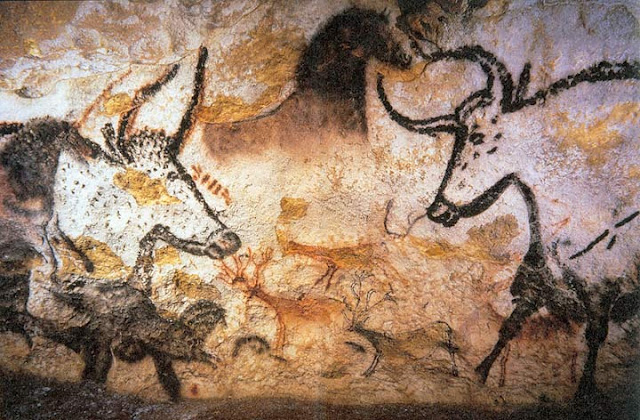Primaries of Design
When I was developing a drawing style for Aladdin years ago we were referencing Persian Miniatures, and Al Hirshfield and trying to find the common denominator that would give style unique to the show. In the late 1980's at Disney it felt like there was a lot of pressure to try to create shows that could in some way measure up to the genius of the early Disney films. It wasn't enough for us to merely "put our stamp on it", I felt I wanted to design something iconic that would be for but one purpose. What would be the best way to visually express this story at this time and in some way attempt to infuse timeless qualities, pretty lofty goal. Since the style was completely contrived and not expressed in either mine, or Richard Vander Wende's personal work, it took a good amount of exploration. At one point I felt that I had 5 drawings that were beginning to define a direction, yet two were not quite there and I was puzzling why. I had been reading a number of books on drawing and found it interesting that many of them referred to three ways to draw, but their descriptions were different and mostly biased toward the direction of the aritst's personal style. Following that concept I wanted to break them down to see if there was a more clear description that made each mode discrete. This is where I began looking at and trying to clarify the distinction between Line, Mass, and Form. With this in mind I took my 5 drawings from Aladdin (3 working and 2 not quite but I could not put my finger on why) along with images of paintings and drawings. Since most of my library was art history books I included a large range of museum images throughout history. I gave the stack of drawings to my wife, (a flight attendant at the time, not an artist) and layed down index cards with Line over Mass, Mass over line, Mass over Form, Form over Mass, Line over Form, and Form over line written on them and showed her the difference. I then asked her to put the stack of images into piles that reflected the index cards. Not only did she put many of them down rapidly, she paused at certain images. We made a discard area and she continued. Without me disclosing anything previously, my wife placed the three Aladdin images into one pile, and the other two (in question in my mind) landed in another pile with another dominant bias. Three things happened as a result of this experiment. One, I learned how to shift the bias of the two drawings to galvanize the drawing style for Aladdin, two, I realized these properties were evident in great artist's work throughout history from cave paintings to todays digital imagery, and three, none of the images in the discard file were from the art history references, rather images I pulled from current art magazines with no historical significance.
We all have our own personal bias as to how we like to paint or draw, some developing their bias through copying their teachers, and others intuitively. But what I would consider achieving successful imagery is not through the illusive pursuit of beauty, rather the clarity in application of the marks we make. They may lean toward the expression of Line, Mass, or Form in different proportions and ranges of contrast. This seems to produce a level of clarity that exists in great artist's works. These three primaries can express a vast spectrum of styles. On the other hand, drawings and paintings where the marks are unclear in their purpose, or where the bias is unclear (when line, mass, and form is jumbled without dominance) the result is imagery lacking in clarity, uninteresting, and unable to tell a story clearly. I relate this to Primaries of Color, both additive and subtractive color. Mixing all three primary hues without bias renders an achromatic result. Rendering the Marks We Make without bias makes inaccessible art, lacking in clarity. It appears that unlike our color triads where adding two primaries creates the compliment of the third, in our primaries of design we can actually add two and create the illusion of the third!
Here are a couple reference images that depict these primaries.





Comments
Post a Comment